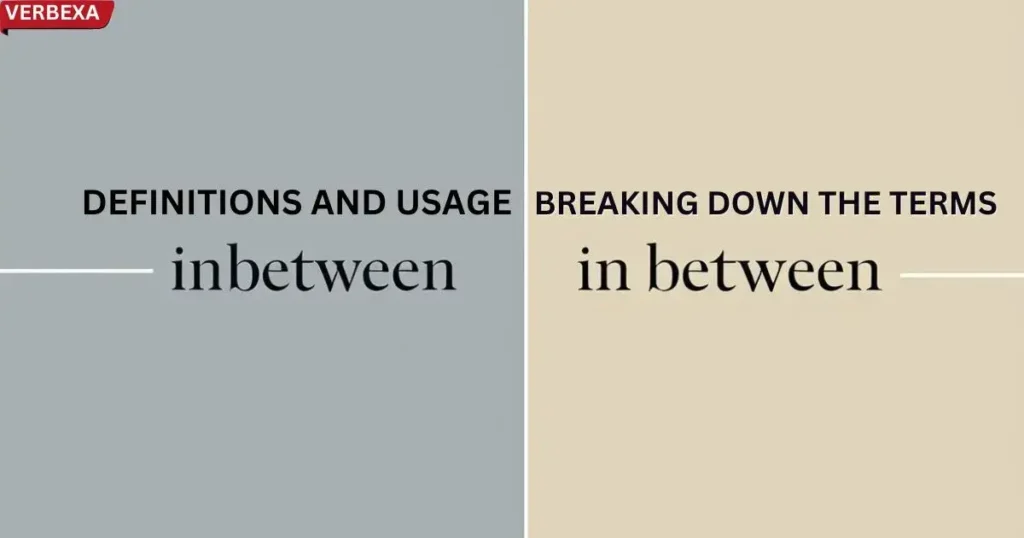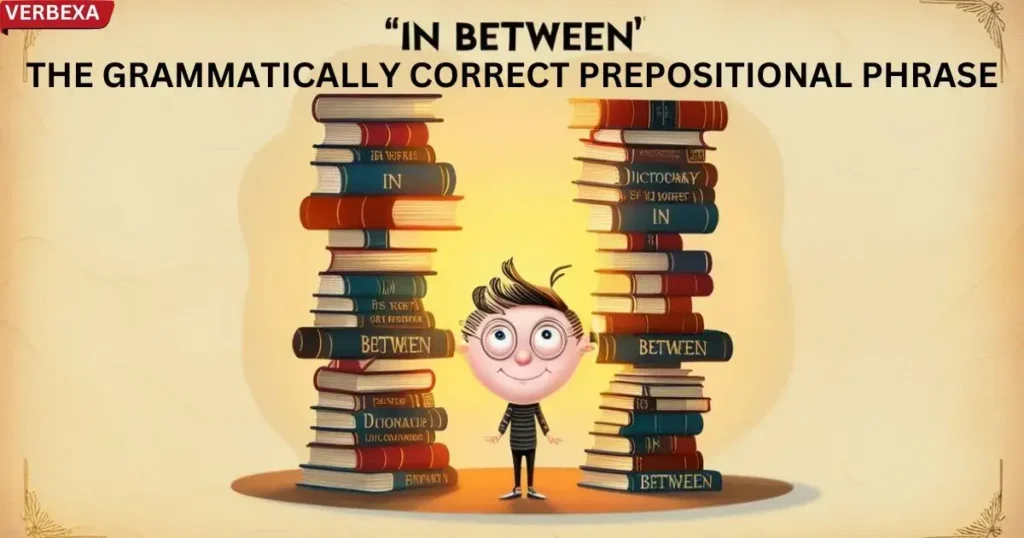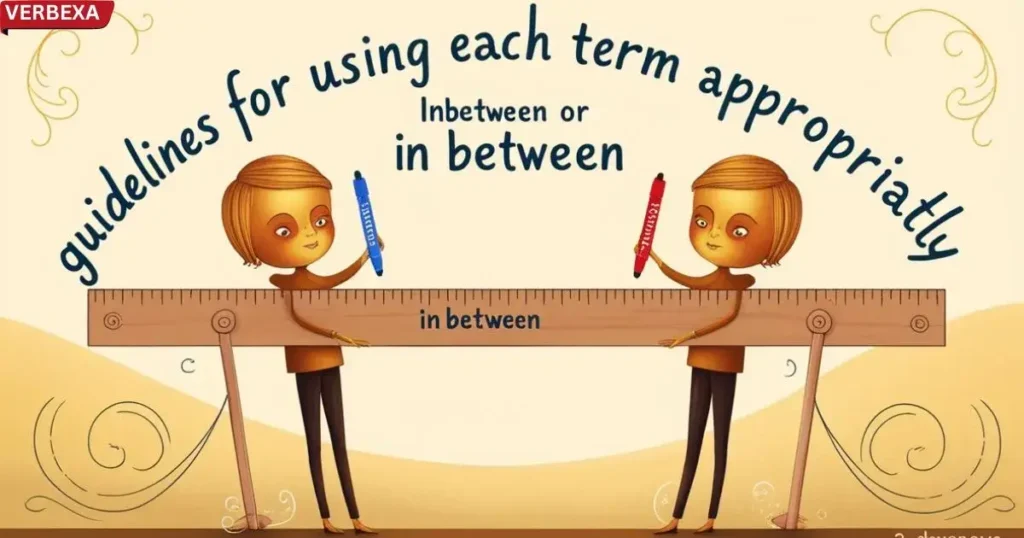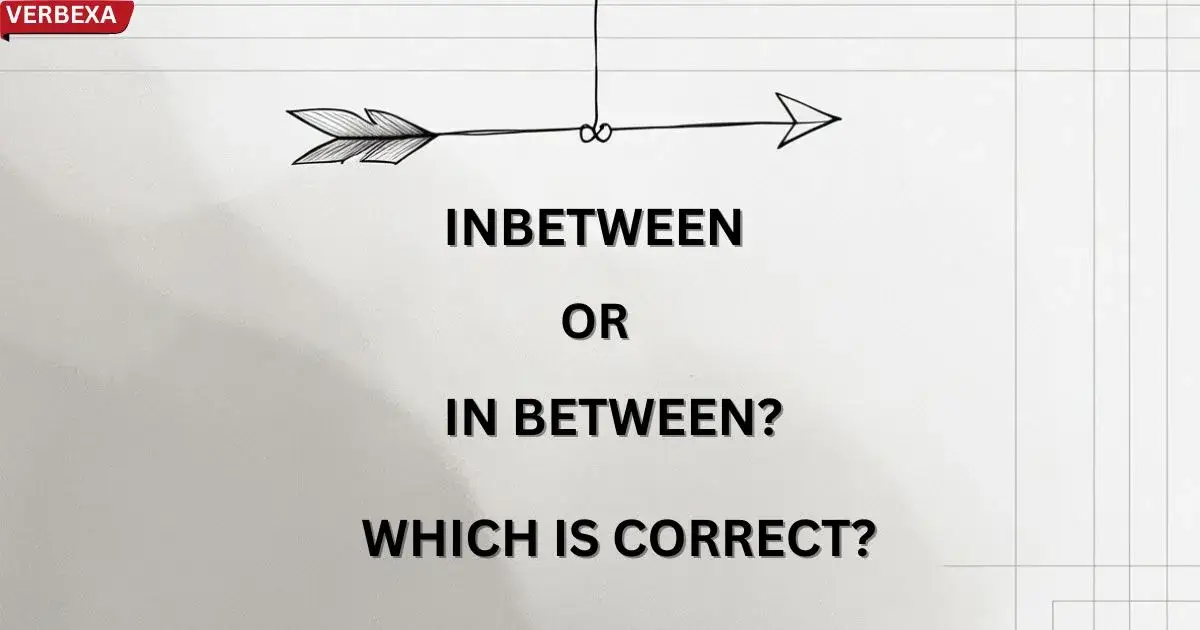Are you unsure whether to use inbetween or in between? You’re not alone! These two phrases are frequently confused, leading to misspellings and grammatical inaccuracies. Understanding the difference is crucial for clear and effective communication, whether you’re writing a formal document or engaging in informal communication.
Imagine trying to explain the location of a park to someone; saying it’s “inbetween the bookstore and bakery” sounds oddly unprofessional compared to saying “it’s in between the bookstore and the bakery.” This small difference can greatly impact the overall impression of your writing. This article will delve into the nuances of inbetween or in between, providing a comprehensive guide to help you master their usage.
Definitions and Usage: Breaking Down the Terms

“In Between”: The Grammatically Correct Prepositional Phrase

“In between” is a legitimate prepositional phrase used to describe an intermediate position or state. It’s composed of two separate words that work together to convey spatial or temporal relationships.
Examples of “In Between” Usage:
- Sarah sits in between John and Mark during the meeting.
- The coffee shop is located in between the bookstore and the bakery.
- I enjoy short breaks in between my study sessions.
“Inbetween”: The Linguistic Imposter

“Inbetween” is not a standard word in Standard English. It’s essentially a misspelling of the correct phrase “in between”. While some might use it in informal communication, it is not accepted in formal writing.
Note that the phrase, while frequently used, is considered somewhat informal in writing. Therefore, a more formal alternative might be needed depending on the context. For example, “The coffee shop is situated between the pharmacy and the bookstore” is a slightly more formal construction.
Synonyms: Alternative Expressions
Here are 10 synonyms for “in between and Inbetween,” keeping in mind that some might require sentence restructuring for a perfect fit:
Synonyms for “In Between”:
- Amid
- Midst
- Middle
- Central
- Intermediate
- Medial
- Intervening
- Midway
- Interior
- Sandwiched
Inbetween Synonyms: Misspelling
- Inconclusive
- Undefined
- Uncertain
- Transitional
- Provisional
- Uncommitted
- Liminal
- Indeterminate
- Pending
- Unresolved
Comparison Table: In Between vs Inbetween
| Aspect | In Between | Inbetween |
|---|---|---|
| Grammar Status | Correct prepositional phrase | Misspelling |
| Formal Acceptance | Widely accepted | Not accepted |
| Typical Context | Formal writing, professional communication | Informal communication |
| Grammatical Role | Describes position or state | No standard grammatical role |
Guidelines for Using Each Term Appropriately

Choosing “In Between”:
- In formal writing
- Academic papers
- Professional documents
- Precise communication
- Describing spatial relationships
Example: The pharmacy is located in between two major intersections.
Avoiding “Inbetween”:
- Stylistic choice matters
- Always opt for “in between”
- Maintain writing conventions
Everyday Usage Examples
- Work Breaks: I take short walks in between meetings to stay refreshed.
- Cooking: Let the meat rest in between cooking stages.
- Kids’ Playtime: We schedule activities in between their playtime.
- TV Shows: Discussing events in between episodes can be fascinating.
- John found a quiet spot in between meetings to review his notes. This demonstrates the correct way to use in between to describe a location within a particular space.
- The children have playtime in between scheduled activities. This shows how in between can be used to describe time and activities.
- During her morning routine, Sarah enjoys a coffee break in between getting ready and leaving for work. This is a common scenario for using in between – describing an action that happens within a given time frame.
Replacing “in between” with “inbetween” would be grammatically incorrect. This illustrates the importance of proper spelling and grammar.
Additional Tips for Language Precision
- Always double-check spelling
- Understand sentence structure
- Context is key in word choice
- Embrace language variation while maintaining clarity
Frequently asked Questions
Which is correct, in between or inbetween?
“In between” is correct; “inbetween” is a misspelling. Always use the two-word phrase.
What does it mean to be inbetween?
It means to be in a transitional state, located in the middle of two things or points in time.
Is there a hyphen in “in person”?
No, “in person” is two separate words; no hyphen is needed.
What is the correct use of “between”?
“Between” shows a position or relationship among two or more things or points.
What is the rule for “between”?
Use “between” to indicate something is positioned or exists in the middle of two or more things.
Is in between hyphenated?
No, “in between” is two separate words; it’s never hyphenated.
How to spell inbetween?
The correct spelling is “in between”—two words, not one. “Inbetween” is a misspelling.
What does “no inbetween” mean?
It means there’s no intermediate state or position; it’s one thing or another, with no middle ground.
What is a word for “inbetween”?
There isn’t one single perfect synonym, but “intermediate” or “transitional” often work well depending on context.
What is the state of being inbetween?
A state of transition, neither fully one thing nor another. It represents a liminal space.
What is the concept of inbetween?
It’s the idea of a space or time existing amidst two distinct points or states.
What is the old English word for “inbetween”?
There isn’t a direct equivalent. Old English expressed the concept using different word combinations.
Conclusion: Mastering the Art of Precision
Understanding the difference between “inbetween or in between” is more than a grammatical nuance—it’s about communicating with clarity and precision. “In between” stands as the grammatically correct, widely accepted term that seamlessly fits into various contexts.
By recognizing the distinction between inbetween vs in between, you elevate your writing style, demonstrating a keen understanding of English language subtleties. Remember, in the world of communication, every word counts, and choosing the right one—in this case, opting for “in between” rather than the incorrect “inbetween” or the rarely used “in-between“—can make all the difference.
Pro Tip: When in doubt, stick with “in between”—your grammar will thank you!

This author is a passionate linguist and grammar enthusiast, dedicated to helping individuals master the art of language. With years of experience in teaching and editing, she brings clarity and precision to every sentence. Tina’s mission is to empower writers of all levels to express themselves with confidence and excellence.

